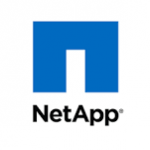This interview with Mike Dye, Solutions Infrastructure Architect and Chief Technology Officer at NetApp, is an excerpt from our recent “Guide to DevOps in Government“. The full guide is available for download at this link.
There are a multitude of benefits to using DevOps: stronger collaboration and teamwork, better transparency, increased productivity, and, best of all, better quality of products and deliverables. But while it may seem like DevOps couldn’t get any better, there are certain strategies your organization can apply to fully reap the process’ benefits.
In an interview with GovLoop, Mike Dye, Solutions Infrastructure Architect and Chief Technology Officer of NetApp, emphasized that automation and flexibility to use and maintain multiple datacenters are critical to optimizing and accelerating your DevOps process.
NetApp offers a number of software tools, systems, and services to help you manage and store your data – all of which can help you make the most of your DevOps process.
Automation and Your DevOps Process
Automation is especially important to an incremental process like DevOps, because continual small enhancements to your product can incur significant manual labor costs. Whether you need to add more memory or storage to your software, it’s important to automate those changes so that you can automatically redeploy and monitor how your changes affect the overall outcomes.
“The biggest value of the DevOps process is that it allows you to make incremental improvements as you operate the system,” Dye said. “But by being able to automate those incremental changes, this allows you to make tweaks or re-architect everything if necessary. So it’s important to think about those tools in conjunction with DevOps.”
NetApp offers a number of tools that work well with a variety of automation frameworks and services. For example, NetApp’s automation tools are designed to work in conjunction with Chef, a configuration management tool that uses domain-specific language for writing system configuration “recipes” and streamlines the task of configuring and maintaining an organization’s servers. This means if you decide to add an ounce of memory here or a tablespoon of storage there for your recipe, you can automate it and keep track of the changes.
Just like with any recipe, however, it’s important not to introduce too many changes at once. This incremental approach helps you keep track of what’s being affected and what changes you’ve made in your software environment.
It also gives other teams greater visibility into your workflow and adjustments. Dye emphasized that automation is not just about consistent management of changes in your software, but also increasing trust between your organization’s teams since automation allows you to keep track of who made what changes.
“With DevOps and automation, it’s crucial you pick the right tools and understand who’s doing what,” Dye said. “It’s about making sure that administration and operations trust and work in concert with the development teams.”
Automation is key to helping you accelerate and optimize your DevOps process. Like many government entities, however, you may be worried about maintaining security and control over your data with modern automated processes and systems. What if there’s a glitch that compromises important data? That’s where managing your Data Fabric comes in.
Managing Your Data Fabric
It can be especially difficult managing DevOps in a government setting. While it is important to maintain control and security over your organization’s data, you also need to be flexible enough to enable the innovation needed for DevOps. To manage this balance, NetApp offers Data Fabric, a tool that allows you to optimize a mix of private and public cloud services.
“With Netapp’s Data Fabric, we can run our data services everywhere,” Dye said. “As an agency, you have your own datacenter with your own private cloud. This allows you to utilize one of the colocation service providers that have some equipment in their datacenter.”
The NetApp Data Fabric gives your organization the ability to run a variety of data services in different environments, maintaining data both in the cloud and in your own datacenter.
Because DevOps is iterative, you will need greater performance and equipment at some times and less at others. Data Fabric lets you upscale and downscale your capacity as needed. Regardless of where you are in the development process, whether you have some data in a public cloud, private cloud, or on-premise, you can be sure your data is streamlined and secure with Data Fabric.
The combination of automation and capabilities like NetApp’s Data Fabric allow you to fully modernize your data infrastructure and processes all while ensuring your data remains safe. Using this combination, your organization can better take advantage of the benefits of DevOps. These tools allow you greater flexibility, ability to adapt to change more rapidly, security, and enhanced trust between teams, and, most importantly, the opportunity to take your DevOps to a whole new level.
Be sure to check out our newest guide on DevOps, available by clicking here.






Leave a Reply
You must be logged in to post a comment.